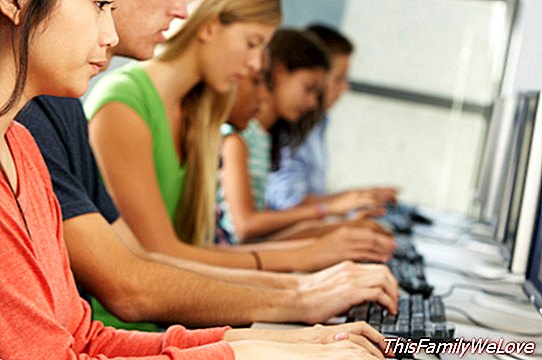The computer in the school does not improve the results of the students
The new technologies not only have they reached our day-to-day lives at home and at work, schools are also implementing them with the aim of improve the performance of students. However the use of the computer in schools does not influence the improvement of results academics, according to the Organization for Economic Cooperation and Development (OECD).
The first OECD evaluation on digital skills not only denies the positive relationship between computers in class and school performance, but ensures that Those who spend many hours in front of the screen get worse grades than those who do it in a moderate way.
The report, called 'Students, Computers and Learning', uses the data from the PISA 2012 Reading, Science and Mathematics report to reach its conclusions. In him the organization warns of the difference between those who make moderate use of the computer in the classroom and those who abuse the screen, although still advocates to reduce the digital divide between students and to give all students the necessary skills to connect.
"Students who use computers moderately at school they tend to have better learning outcomes than students who use computers on rare occasions, "says the study, however, clarifies that students who use computers very often "do it much worse".
Investment in new technologies
In many countries, governments have invested heavily in so-called Information and Communication Technologies (ICT) in the field of education, but the OECD has emphasized that this effort has not seen "any noticeable improvement" in the results of PISA in Reading, Mathematics or Science.
In fact, this is related to another OECD announcement a year ago: the investment made in Spain between 2009 and 2012 to provide laptops to students and digital whiteboards to the classrooms had no consequences on student performance of our country during that period.
In this sense, Spain is below the average in reading competence and mathematics in digital support. Something that is directly related to the vision of the OECD: although in the country there is a very high technological level in the education system, five percent of the students that faced the PISA tests did not know where to start when they put in front of an 'online' text.
Therefore, the report published this week insists on an idea: Ensuring that each child reaches a "basic level" of reading and math skills is better and contributes more to equal opportunities in the digital world than "solely proportional access to high-tech devices and services". That is, it is not wrong for children to access computers, but it is better to be taught to use them with profit.
The role of teachers
For children to learn digital skills there must be someone to teach them, which makes it necessary for them to the teachers also learn. At this point, the director of Education of the organization, Andreas Schleicher, invites countries to invest more efficiently in technology to ensure that teachers are "at the forefront" of the design and implementation of technology in the education system.
The document warns that differences between students from less favored environments and others in terms of digital reading, it is very similar to the performance gap in the paper test, which suggests that to reduce inequalities in digital skills "countries need to improve equity in education in general", the authors of the report assure.

Students by computer
Spain is the fourth country in the list of the OECD report in which more students use the computer at school, standing above the organization average with 73 percent versus 72 percent. In addition, our country stands out because it is the one that has fewer students per computer: 2.2 students have one, compared to 4.7 students per computer from the OECD average or 5.3 from South Korea.
Likewise, the students of our country are also above the OECD average in Internet use: they use it at least once a week to complete homework at school, 51.1 percent of them, while the OECD average stands at 41.9 percent. Regarding the use of the internet outside the educational center, the percentage is 61.9 percent in Spain and 54.9 percent in the rest of the OECD.
Angela R. Bonachera




